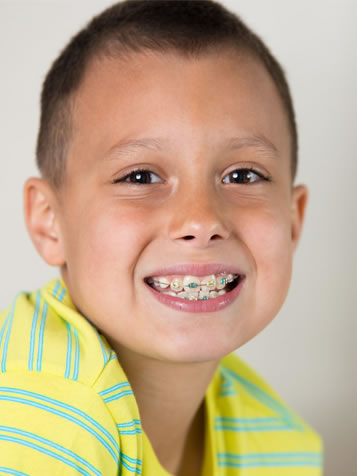Early Orthodontic Treatment
Early Orthodontic Treatment for Children
What is the difference between early orthodontic treatment and regular orthodontic treatment, and why might my child need early treatment? How will early treatment benefit my child in the long run?
These are just a few of the questions surrounding the topic of early orthodontic treatment for children. The American Association of Orthodontists recommends that children see an orthodontist as early as age seven. At this point the orthodontist will evaluate whether your child might need full orthodontic treatment later on and whether or not they can benefit from early intervention in the mean time.
When indicated, early treatment (also known as Phase One) typically begins around age seven or eight and then comprehensive tx with full braces (also known as Phase Two) usually begins when all or most of the permanent teeth are in (usually around age 11 or older). The goals of early treatment can include correcting/improving bite problems (such as an overbites,underbites and crossbites), creating more room for the eventual eruption of permanant teeth and/or simply aligning teeth for esthetic reasons.
In some cases, early treatment can actually minimize or even eliminate the need for future orthodontic treatment. But even though Phase Two treatment is usually still needed/desired, early intervention can often simplify and shorten later treatment. In addition, it can sometimes minimize unwanted wear on teeth and can also help bolster a child's self-esteem while they are waiting on getting enough teeth for full braces.
If your child is between the ages of seven and eight and shows signs of needing orthodontic care, or if you have been directed by your family dentist to visit the orthodontist, please contact our practice and schedule an appointment. Our team will provide your child with an initial exam, and our doctors will discuss with you the best steps to take toward caring for your child's smile.

